Corsair SF450 PSU Review
Corsair enters the SFX PSU market with its new SF series consisting of two models at 450W and 600W capacities. Both power supplies are fully modular, promise high performance and come with 92mm fans to minimize noise output.
Why you can trust Tom's Hardware
Transient Response Tests
Advanced Transient Response Tests
For details on our transient response testing, please click here.
In these tests, we monitor the response of the PSU in two different scenarios. First, a transient load (10A at +12V, 5A at 5V, 5A at 3.3V and 0.5A at 5VSB) is applied for 200ms while the PSU works at 20 percent load. In the second scenario, the PSU is hit by the same transient load while operating at 50 percent load. In both tests, we use our oscilloscope to measure the voltage drops caused by the transient load. The voltages should remain within the ATX specification's regulation limits.
These metrics are crucial because they simulate the transient loads a PSU is likely to handle (such as booting a RAID array or an instant 100 percent load of CPU/GPUs). We call them "Advanced Transient Response Tests," and they are designed to be very tough to master, especially for PSUs with less than 500W capacity.
Advanced Transient Response at 20 Percent
| Voltage | Before | After | Change | Pass/Fail |
|---|---|---|---|---|
| 12V | 12.054V | 11.744V | 2.57% | Pass |
| 5V | 5.012V | 4.940V | 1.44% | Pass |
| 3.3V | 3.337V | 3.269V | 2.04% | Pass |
| 5VSB | 5.024V | 4.985V | 0.78% | Pass |
Advanced Transient Response at 50 Percent
| Voltage | Before | After | Change | Pass/Fail |
|---|---|---|---|---|
| 12V | 12.034V | 11.907V | 1.06% | Pass |
| 5V | 4.994V | 4.927V | 1.34% | Pass |
| 3.3V | 3.319V | 3.260V | 1.78% | Pass |
| 5VSB | 5.005V | 4.963V | 0.84% | Pass |
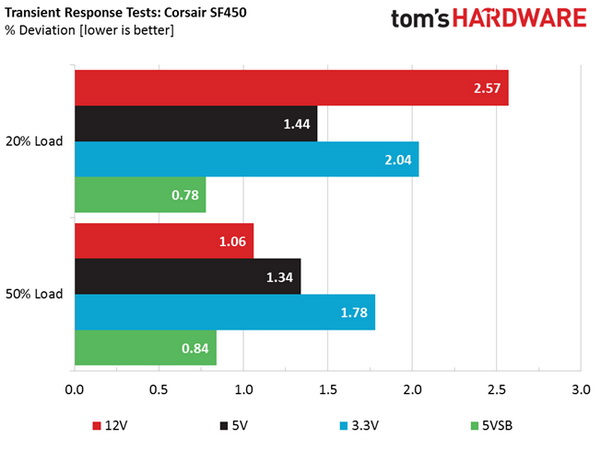
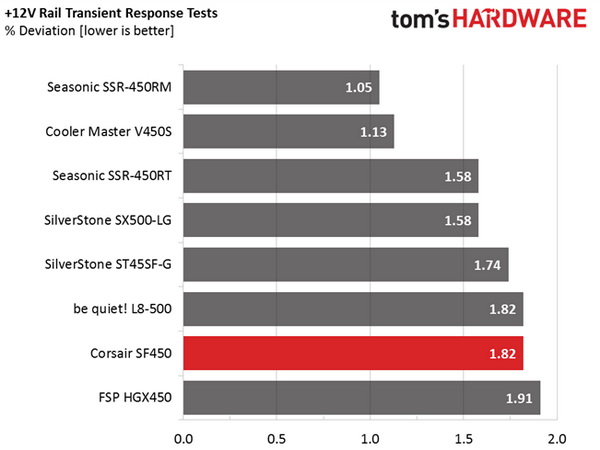
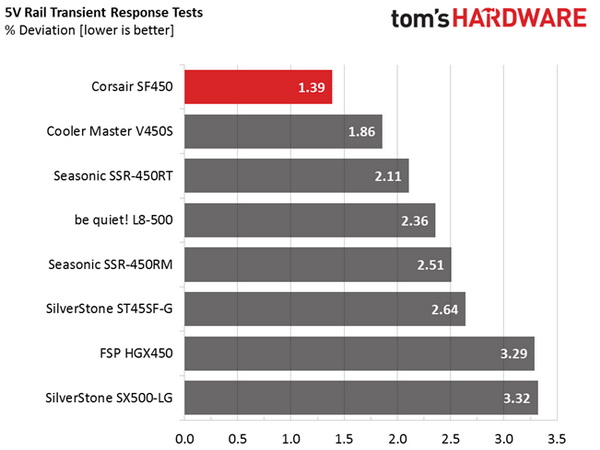
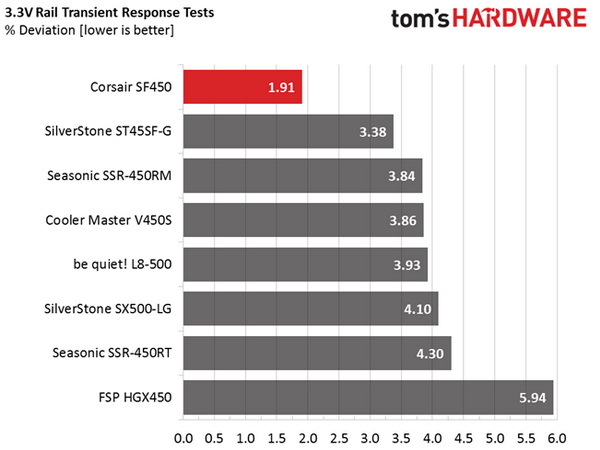
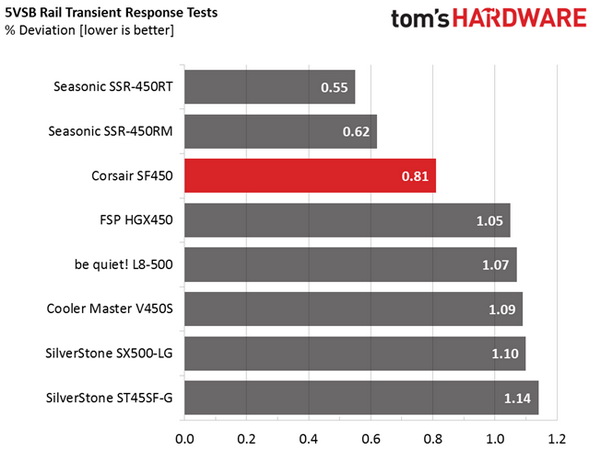
Although the +12V rail is the most important, we'll start by mentioning the 3.3V rail because it performs so well. This is probably the first time we've seen such low deviations at 3.3V. The 5V and 5VSB rails also perform well, while the deviation at +12V during the first test is higher because the primary switchers operate in PWM mode. During the second test, where frequency modulation mode is engaged, the deviation is close to 1%. That's a good number given the unit's low capacity.
Here are the oscilloscope screenshots we took during Advanced Transient Response Testing:
Transient Response At 20 Percent Load
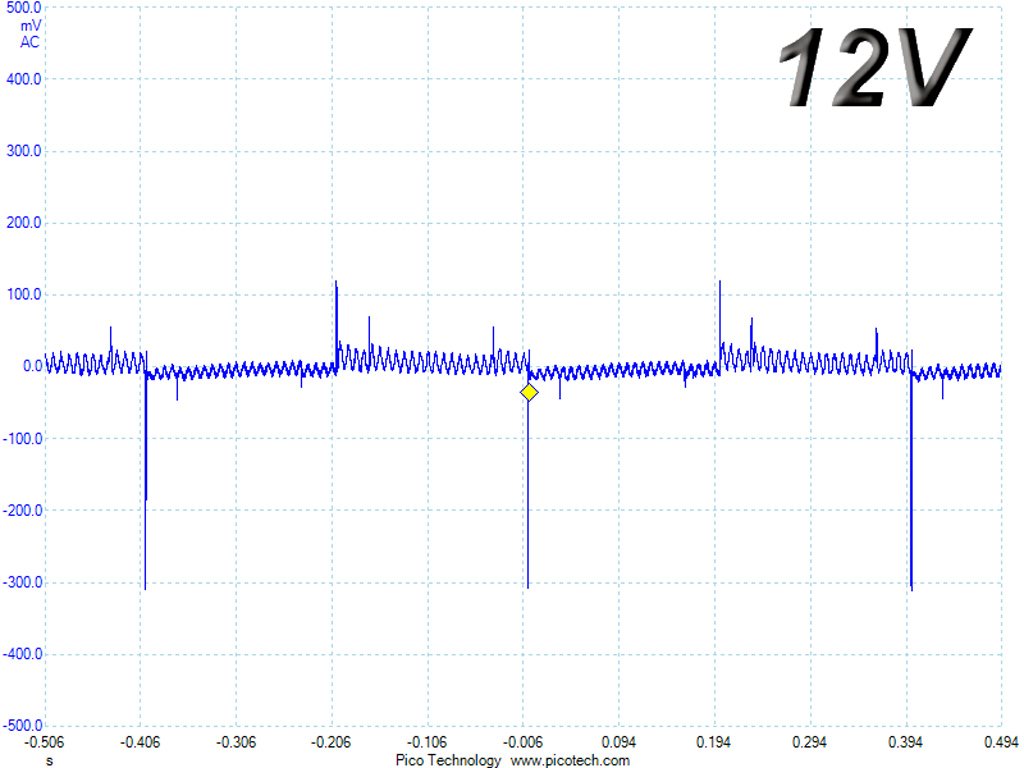

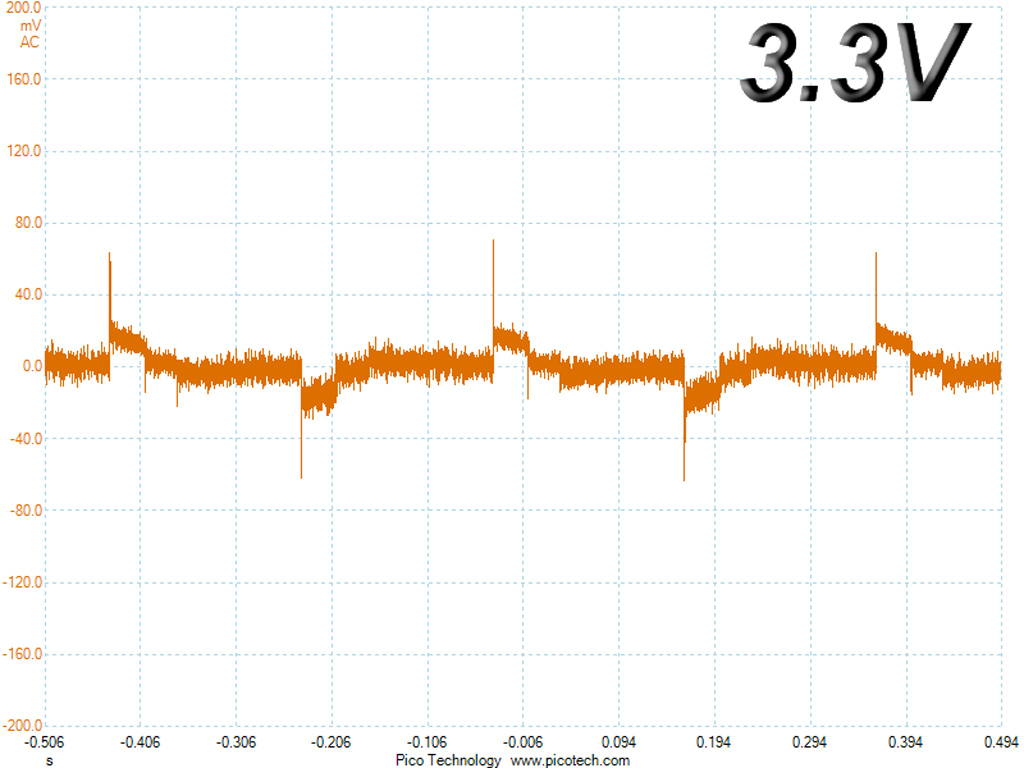
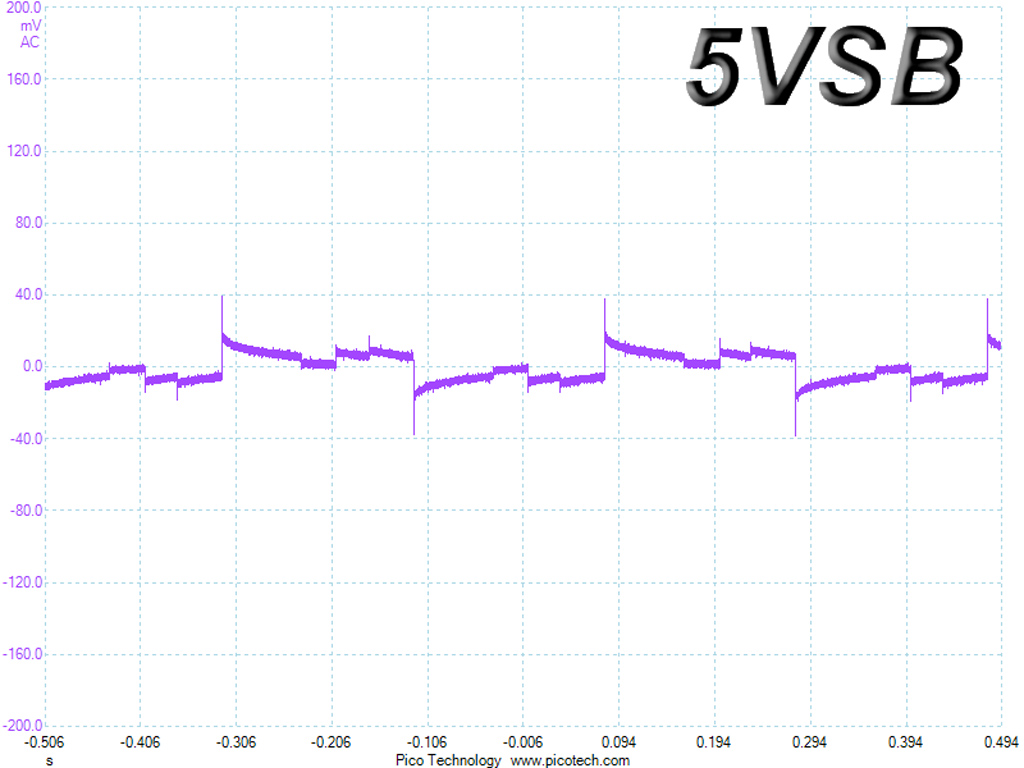
Transient Response At 50 Percent Load
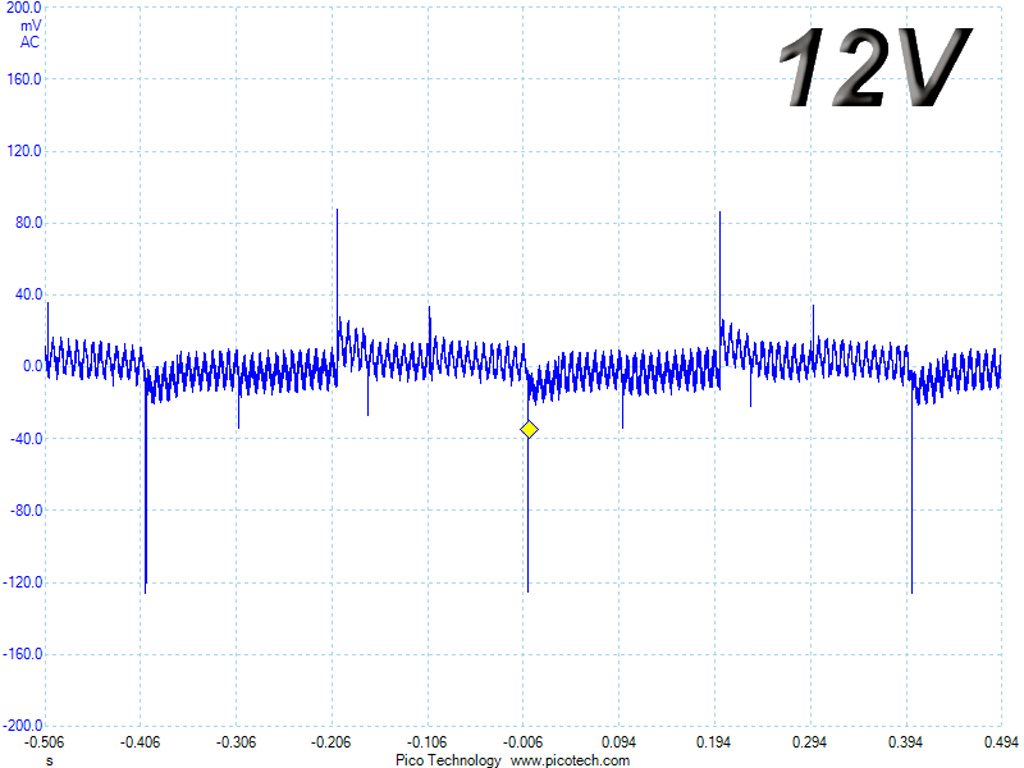
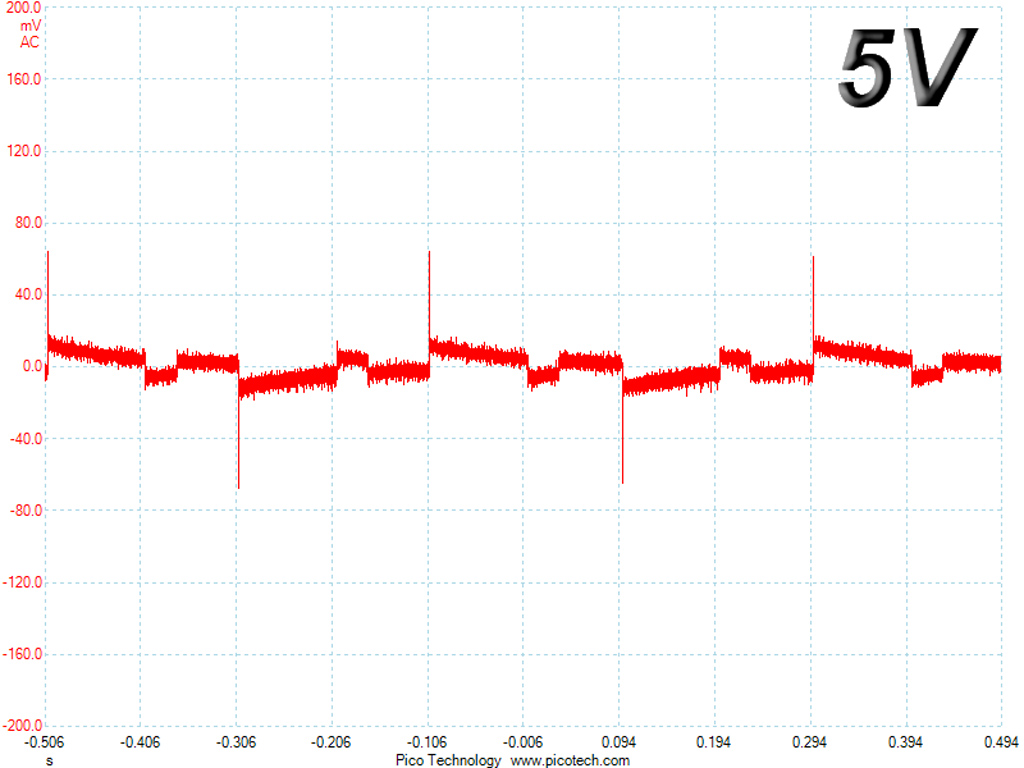
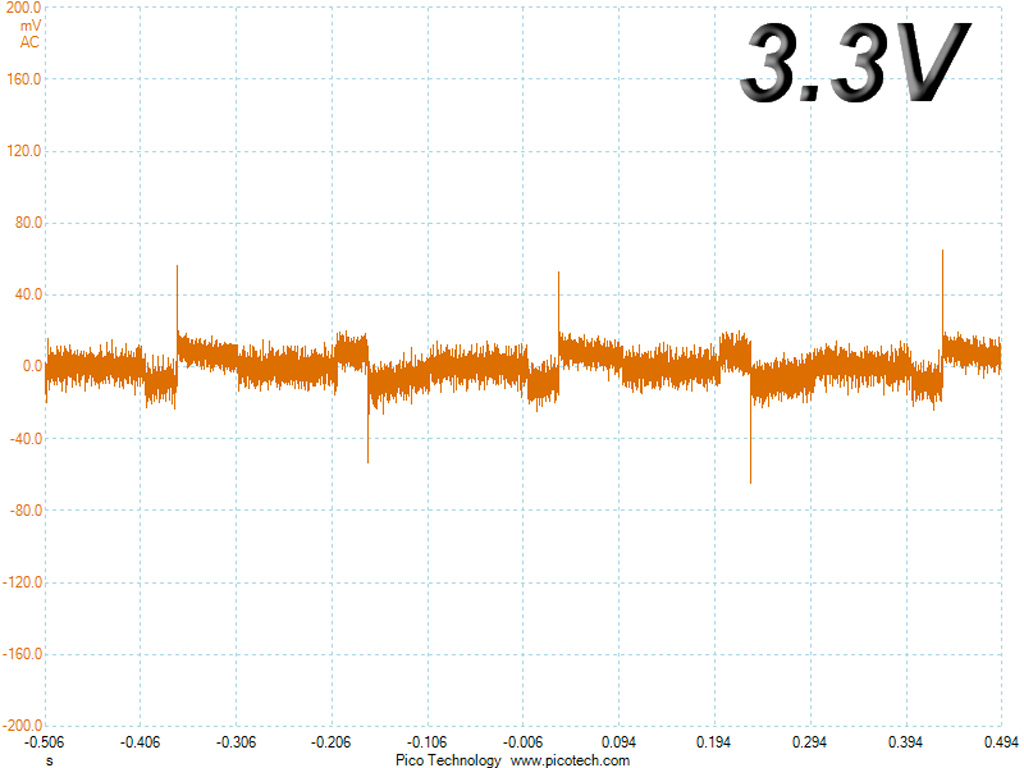
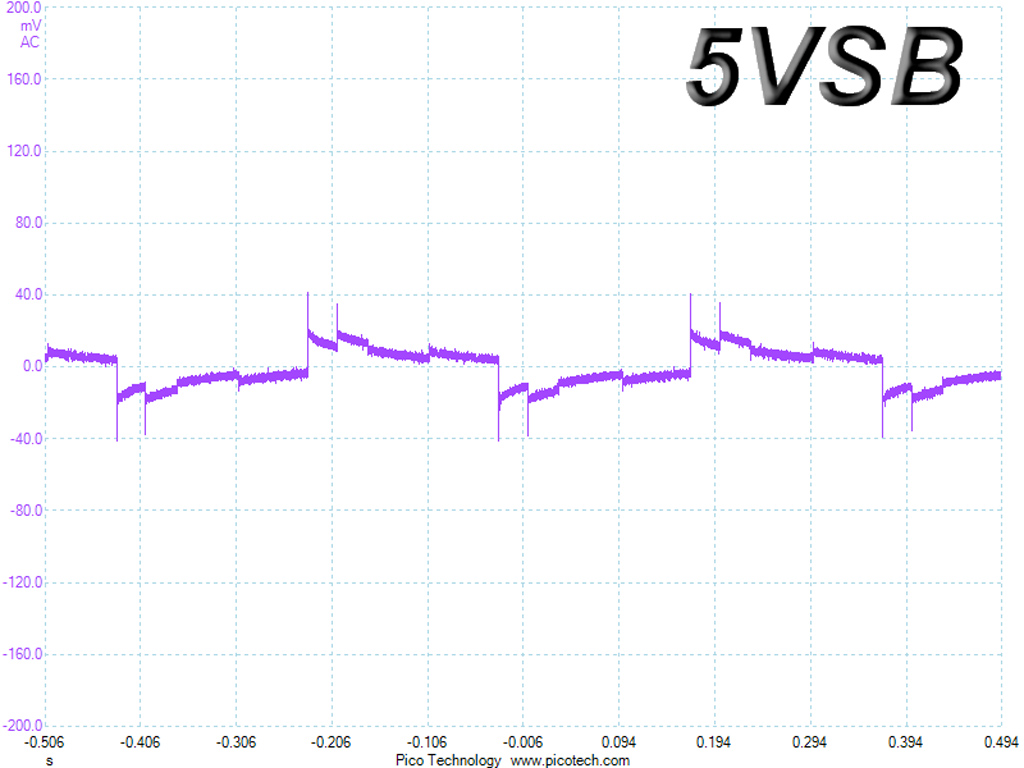
Turn-On Transient Tests
In the next set of tests, we measure the PSU's response in simpler transient load scenarios—during its power-on phase.
For the first measurement, we turn off the PSU, dial in the maximum current the 5VSB can output and switch on the PSU. In the second test, we dial the maximum load the +12V can handle and start the PSU while it's in standby mode. In the last test, while the PSU is completely switched off (we cut off the power or switch off the PSU by flipping its on/off switch), we dial the maximum load the +12V rail can handle before switching on the PSU from the loader and restoring power. The ATX specification states that recorded spikes on all rails should not exceed 10 percent of their nominal values (+10 percent for 12V is 13.2V, and 5.5V for 5V).
Get Tom's Hardware's best news and in-depth reviews, straight to your inbox.
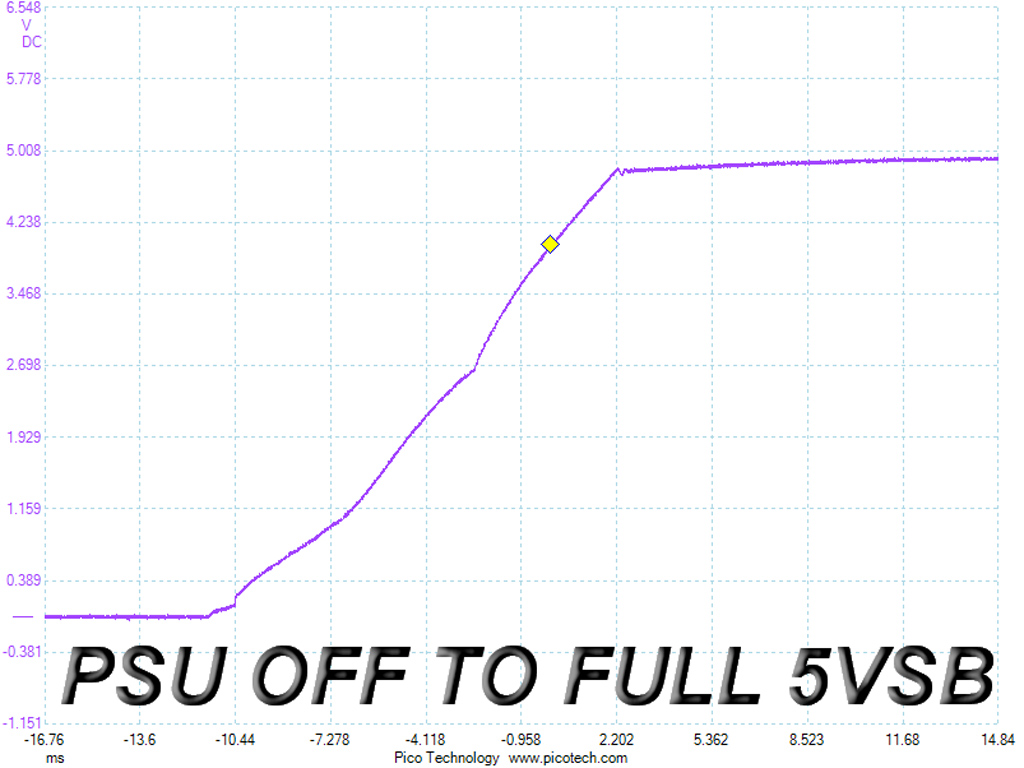
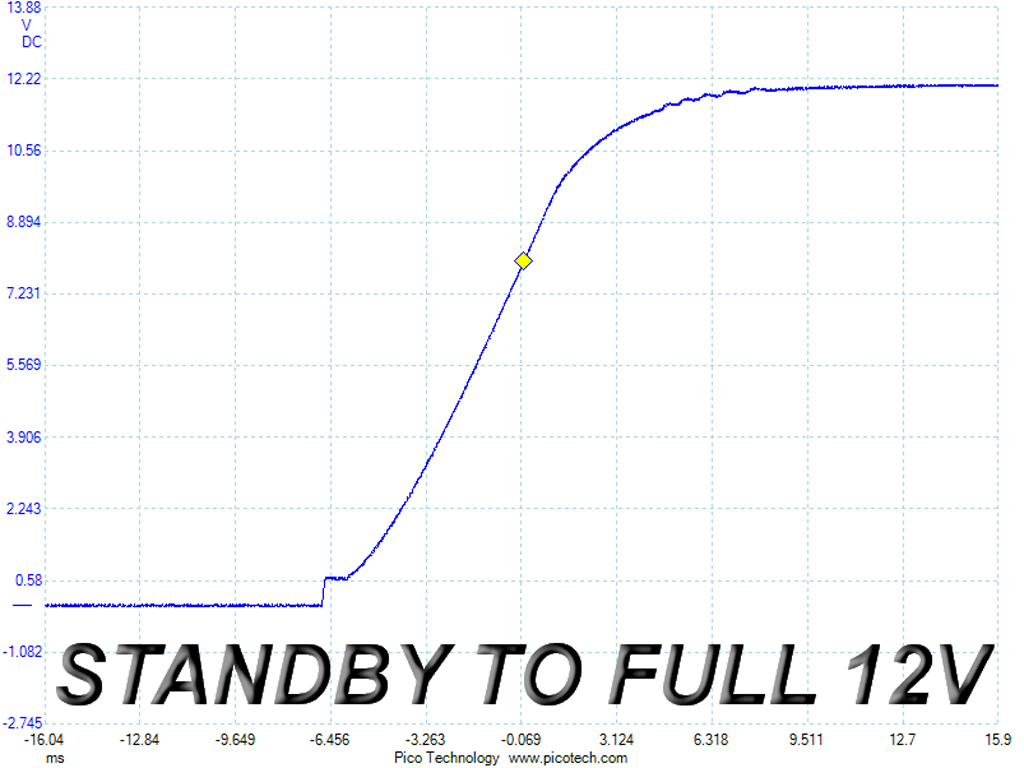
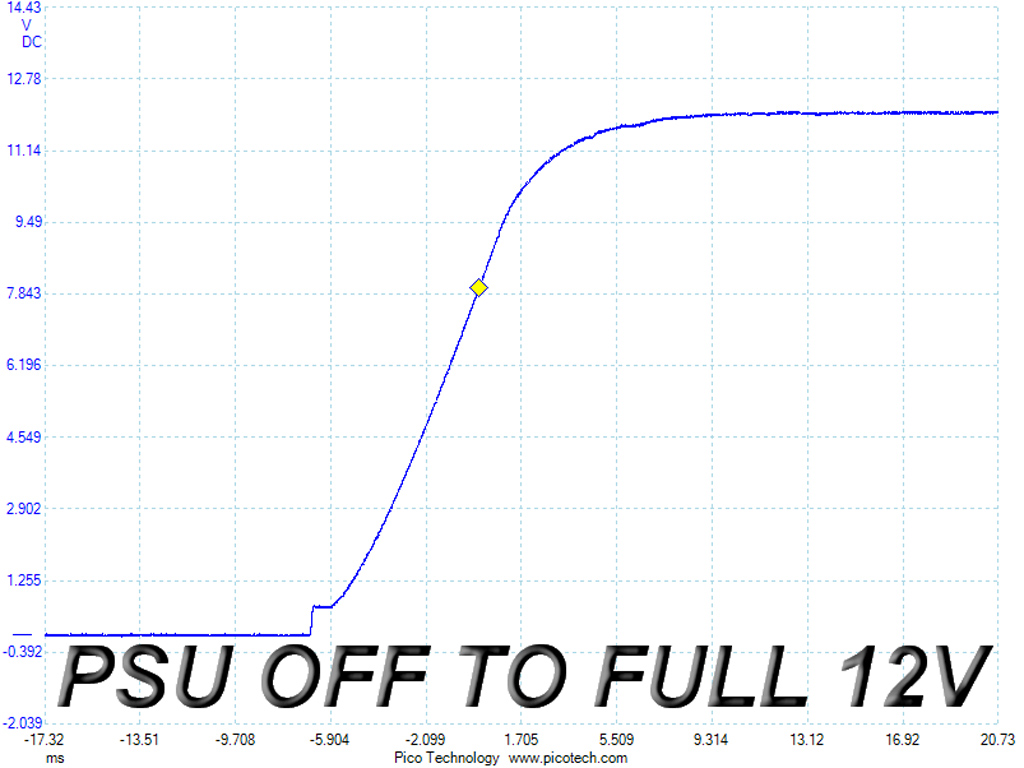
There are no voltage overshoots or spikes to report. Only a small step in the +12V slope during the last two tests prevents the SF450 from achieving a perfect result.
Current page: Transient Response Tests
Prev Page Cross-Load Tests And Infrared Images Next Page Ripple Measurements
Aris Mpitziopoulos is a contributing editor at Tom's Hardware, covering PSUs.
-
spdragoo Interesting...a small-factor PSU with enough power & PCIe connectors for those with a prebuilt system that want to upgrade their GPUs without having to rebuild the entire system from scratch.Reply -
turkey3_scratch Reply17801331 said:"No berg connector," is a con? And this is why Johnnyguru is the better website.
I find it hard to believe you actually read power supply reviews, because on Jonnyguru OklahomaWolf always scores against having a berg connector. Also, Jonnyguru only tests a few things compared to Aris's reviews on Tomshardware and Techpowerup.
Edit: I just realize I misinterpreted what you said. I do apologize, it was my mistake. I did not realize the word "not". Yes, Aris and Jonnyguru have different reviews on berg connectors. I still don't think that just because a berg connector is a good thing means that Jonnyguru is a better review site. That seems to be an extremely minor detail to judge one whole review site to this one. -
Onus Hmmm, looks like the only thing not to like is that all the SATA connectors are on one cable, which could be a problem even in some small cases where this would be used; the optical drive might not be near the other drives.Reply -
jimmysmitty Reply17801372 said:Hmmm, looks like the only thing not to like is that all the SATA connectors are on one cable, which could be a problem even in some small cases where this would be used; the optical drive might not be near the other drives.
And that is easy to solve since you will probably be able to buy cables and change the molex out for another SATA cable, like all Corsair PSUs.
I wish this was out when I rebuilt my HTPC. Would have preferred it since what was available at the time was just meh and nowhere near the performance. -
turkey3_scratch Just finished review. Great unit, wonderful. I'd take this over one of the Silverstones any day.Reply -
Aris_Mp Reply"No berg connector," is a con? And this is why Johnnyguru is the better website.
Some components still need a berg connector ( e.g. sound card panels, fan controllers, etc.) And it costs almost nothing to add a berg adapter into the bundle.
-
JQB45 Exciting to see more SFF power supplies of good quality. Now I have even less reason not to buy a mini-itx case next time.Reply -
turkey3_scratch Reply17801331 said:"No berg connector," is a con? And this is why Johnnyguru is the better website.
On second read of your post, I misinterpreted what you said, and I do apologize. I thought you were upset that including a berg connector was a con, I'm sorry I misinterpreted it. Yeah, this unit doesn't have a berg connector. Here's the thing: you have OklahomaWolf who scores against having berg connectors, and you have Aris who likes to see berg connectors. Two complete opposite subjective standpoints. What I don't understand is how this makes Jonnyguru a better site.
Whenever I read power supply reviews, I always ignore the conclusion page. I usually don't read it. The information is all there for you to judge. Whether or not the author thinks a berg connector is good or bad is an opinion, but it does not detract from how professional Aris's reviews are. I mean, come on, Jonnyguru does not test transient response, hold-up time, AC_LOSS to PWR_OK, 1500 crossload possibilities, extensive efficiency and fan RPM, etc. tests. I just can't see how Jonnyguru can be a better review site because they only do a fractional amount of testing.
Jonnyguru's resources are limited, so it's understandable. I think some people like Jonnyguru just because of how "fast" one can fly through the reviews. It takes me a solid 25 minutes of thorough analysis to read Aris's reviews, I can go through a Jonnyguru one in under 10 minutes. There is just so much information here, so why is it you think Jonnyguru is a better site? -
AlistairAB Thank you Tom's Hardware for highlighting the lack of the SFX adapter bracket. It can be purchased directly from Corsair at the following link:Reply
http://www.corsair.com/en-us/sfx-to-atx-psu-adapter-bracket
This was also mentioned in a newegg.ca review, and received many down votes. Perhaps this is because of American focused reviews, so most people think it is not a big deal to order a $5.99 adapter directly from Corsair or through a 3rd party.
However this is actually a serious mistake, as ordering this to Canada from Corsair requires over $50 USD in shipping. Total cost for the bracket after shipping and taxes is over $80 CAD which is absolutely ridiculous for a part with no retail availability or alternatives that should have been included in the box.
I talked with Corsair support this morning and opened a ticket, and they provided exemplary customer service and have now promised to send the adapter to me in Canada for free. Perhaps this will work for some of you having the same problem.
There are many small form factor cases that accept ATX PSUs that need this bracket (Silverstone and Lian Li cases), where the short cable lengths don't pose a problem.